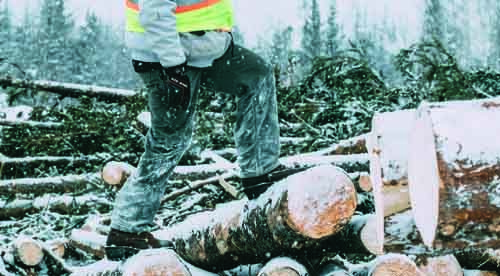Seasonal safety footwear
What should a safety manager look for in seasonal safety footwear?

Responding is Kristin Hamilton, senior product merchandising manager, Red Wing Shoe Co., Red Wing, MN.
When looking for the right work boots for employees, a safety professional should consider many things, including safety features, the work environment, how the product fits and feels, and innovative materials to ensure durability and performance. Another important aspect that shouldn’t be overlooked is the seasons, because many workers may encounter a variety of temperatures and changing elements.
The following are key considerations for seasonal safety footwear to ensure your workers aren’t only safe on the job, but comfortable.
Best-in-class outsoles: Cold weather means slick surfaces, which can increase a worker’s chance of slips, trips or falls. Warm temperatures, on the other hand, make work on concrete and pavement surfaces hot and unbearable. Look for an outsole engineered to withstand extreme temperature ranges to keep feet warm or cool, depending on the environment. Tridirectional traction lugs improve grip, while a defined heel breast enhances downhill braking control to help your workers navigate challenging terrain.
Innovative materials: When temperatures are high, you need your workers to wear boots made out of breathable materials or shoes that include cooling textiles. Freezing temperatures require insulation, so opt for work boots with traditional lofted insulation or consider footwear made with warming materials using aluminum technology. This paper-thin innovative technology actually reflects and retains body heat to surround and keep warmth at your feet.
Waterproof system: A new season can bring increased rainfall that can make workers wet, cold and uncomfortable if the work boot lacks a waterproof system. To ensure feet stay dry in wet conditions, go with footwear that uses a three-layer waterproofing system. First, a lining will help move moisture away from the foot to keep it dry. Next, an open cell foam provides additional cushioning and a comfortable fit. Finally, a waterproof bootie acts as a barrier to keep water out, ensuring a complete waterproof system.
Moisture-wicking socks: Whether it’s 80° or -10° F, feet can sweat, and the sock is a critical component that keeps moisture from developing and causing issues. Merino wool or merino wool blends keep feet warm without adding too much heat in cooler months.
Maintenance matters: Quality footwear will perform well in the elements, but taking the time to properly clean, condition and protect work boots goes a long way in extending their life. Shoe care kits, lifetime tuneups, cleaning and minor repairs make it easy to keep footwear performing, no matter the season.
From scorching temperatures to frigid ice and plentiful rain, new seasons mean new challenges on the jobsite. By going with purpose-built work boots for different seasons, your workers will efficiently tackle the job while remaining comfortable and safe.
Editor's note: This article represents the independent views of the author and should not be construed as a National Safety Council endorsement.
Post a comment to this article
Safety+Health welcomes comments that promote respectful dialogue. Please stay on topic. Comments that contain personal attacks, profanity or abusive language – or those aggressively promoting products or services – will be removed. We reserve the right to determine which comments violate our comment policy. (Anonymous comments are welcome; merely skip the “name” field in the comment box. An email address is required but will not be included with your comment.)

